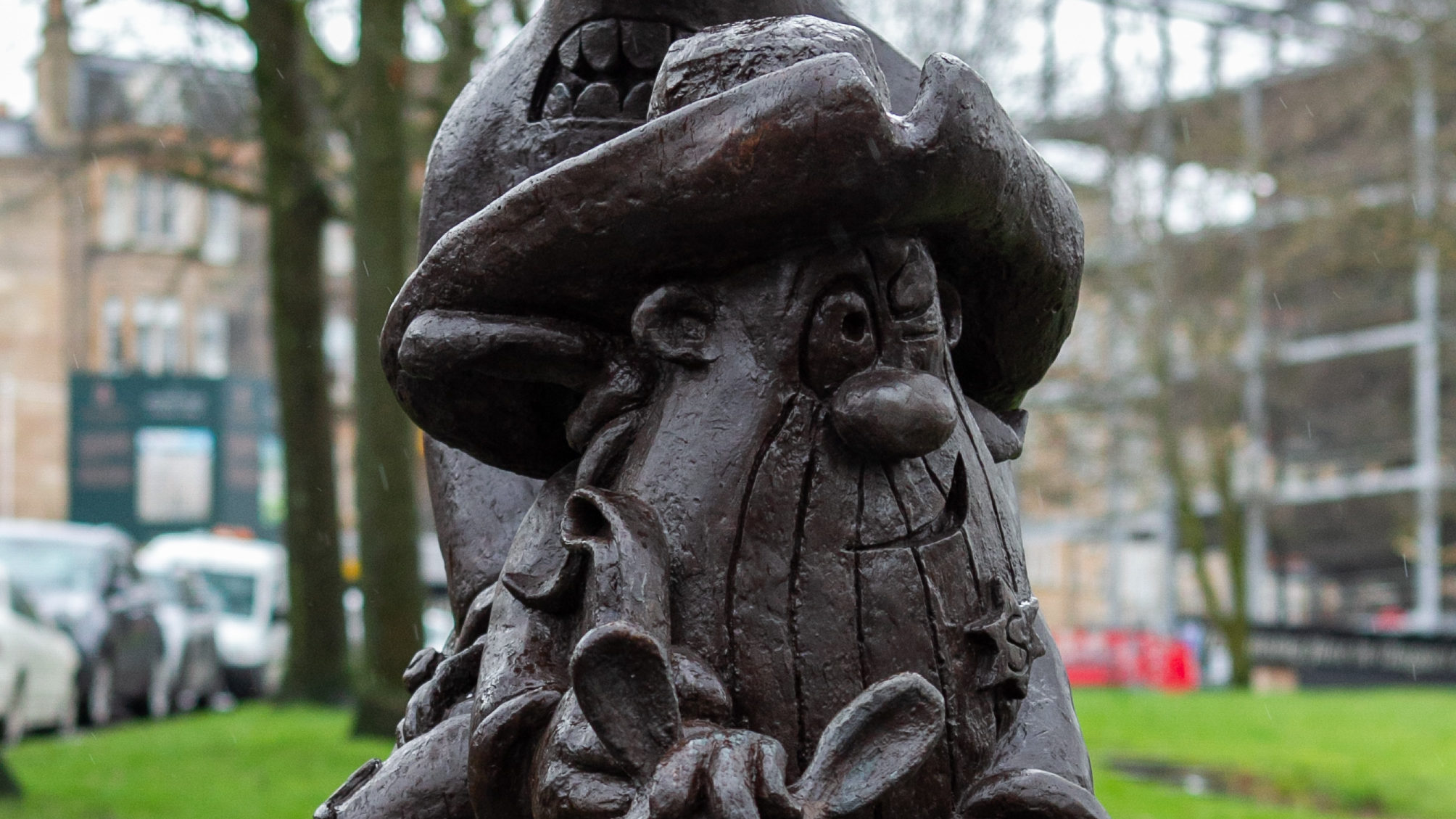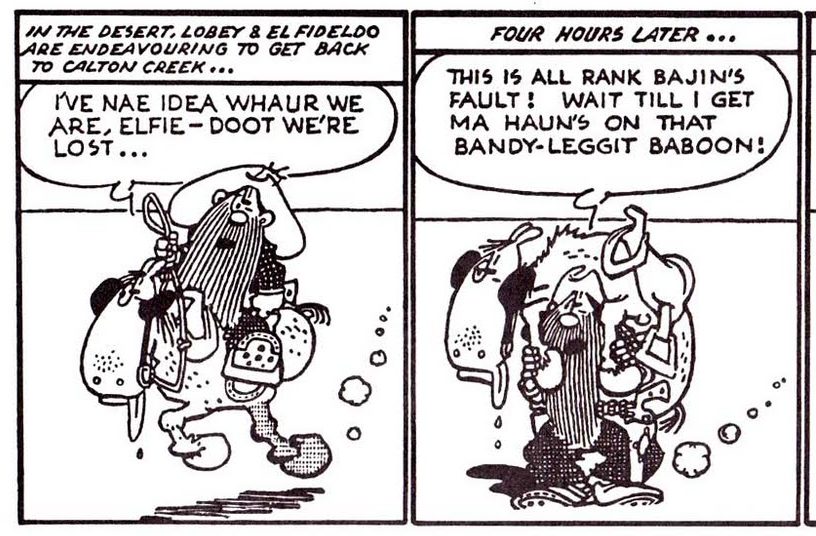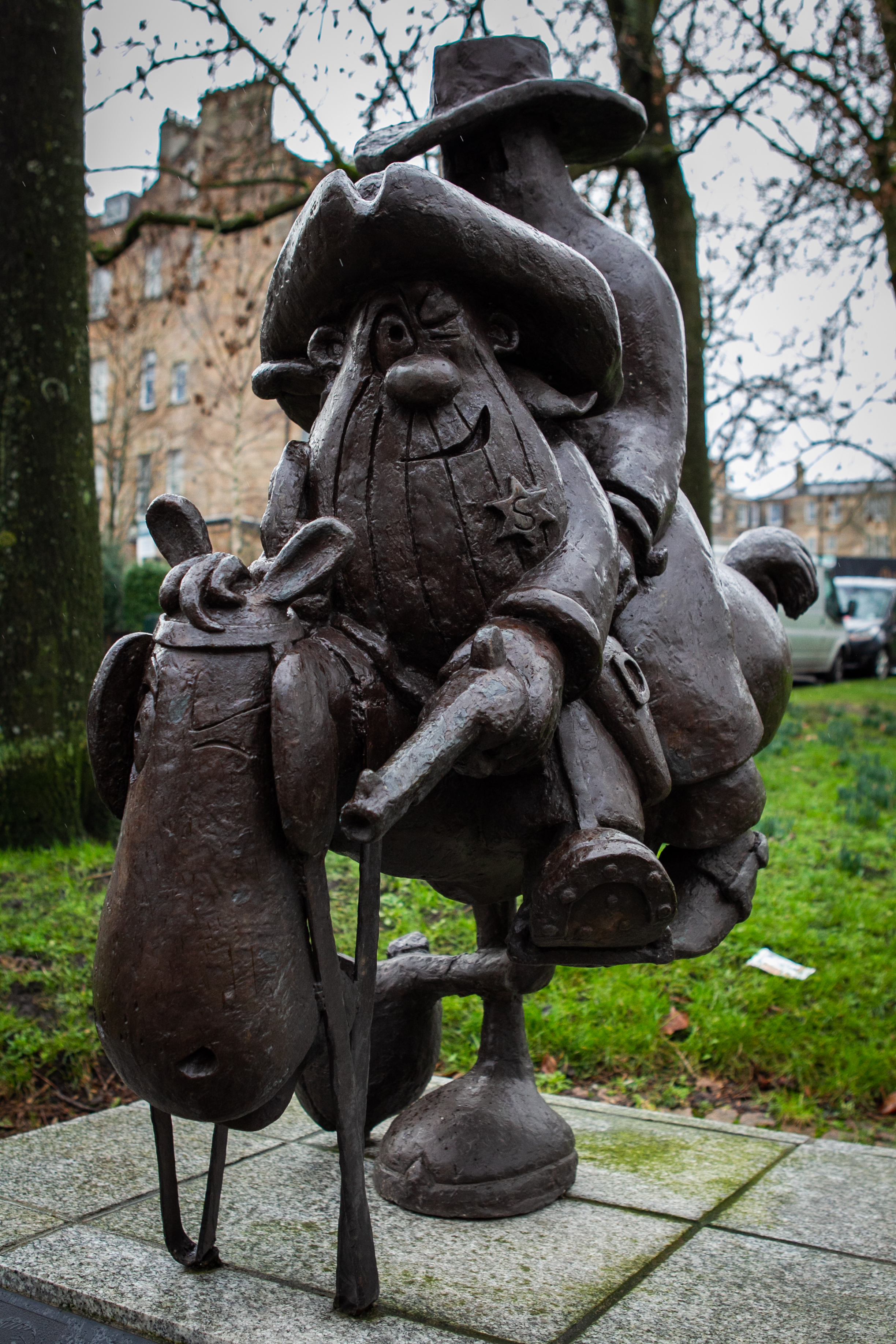
HE imagined a cartoon world melding the east end of Scotland’s biggest city with America’s wild west.
His surreal world where a Glaswegian sheriff on a two-legged horse pursued a black-clad baddie, Rank Bajin, a well-enunciated villain with “Villain” etched on his door, as grateful townsfolk hailed his efforts by crying “Lobey’s the wee boy!”
And, exactly 70 years since Bud Neill’s cartoon lawman Lobey Dosser made his newspaper debut, one famous fan believes Neil’s comical musings are as rib-tickling and relevant as ever.
Bestselling novelist Christopher Brookmyre said: “Most of his cartoons are timeless.
“There are ones like the GI Bride character that refer to current events and reflect the changing times. The humour is still funny.
“They aren’t anachronistic and there’s a lot that’s just about the language or the social observation that makes you laugh.
“They had that same kind of absurdist, anarchic humour that I associated at home with my father and my papa.”

Born William Neill in Partick in Glasgow in 1911 before moving to Troon, horse-loving Bud developed a passion for Westerns at Saturday morning screenings at his local cinema.
He studied at Glasgow School of Art and saw service in the Second World War before working as a bus driver in his home city.
He started doing cartoons about Glasgow in the Evening Times before his soon-to-be-legendary Sheriff of Calton Creek strip rode out for the first time in early 1949.
Diminutive Lobey Dosser, his two-legged horse El Fideldo, and nemesis Rank Bajin, with their Arizona backdrop but Glaswegian patter, soon won a legion of fans.
And Brookmyre says the enduring appeal is shown by the fact that Lobey folklore was passed down through the generations from his granddad and dad.
“They would talk about Lobey and Rank Bajin and Fairy Nuff and Red Skwerr and I had images in my head about what they looked like long before I saw them.
The Lobey Dosser strips were soon collected in books.
Brookmyre, whose latest novel Fallen Angel is published in April, still finds amusement in the Neil books in his collection.
And Neil’s influence stretched further. In the run-up to Glasgow’s reign as European City of Culture in 1990, it was felt that Neill’s comic culture deserved recognition.
A hugely popular exhibition of his works was staged and, thanks to a generously-funded public appeal, a statue of Lobey, Rank and El Fideldo was erected in Woodlands Road.
It was to play a part in Brookmyre’s sixth book A Big Boy Did It And Ran Away, one of his most popular.
“The villain is known as The Black Spirit because he leaves a calling card of an image that investigators assume to be some kind of ghost,” explained Brookmyre.
“The detective is driving up Woodlands Road and spots the Lobey Dosser statue. He realises it’s not a black ghost but is actually Rank Bajin being used as an avatar.
“I hoped that the comparative obscurity would work for the character to be able to get away with it and for there to be a big reveal. But I also hoped it would lead people to investigate Bud’s books.”
Although Neill died in 1970, his fame lived on and grew worldwide.
Another statue, of the GI Bride, was erected at Partick Station in 2011 and the Mighty Fine Theatre Group was formed to put on popular Lobey Dosser stage shows from 2014.
“There can’t be many cartoonists, dead and out of print, who are so fondly remembered,” said Brookmyre.
“And how many have the accolade of not one, but two statues?
“It’s often said that people are never a prophet in their own land but in Glasgow there is a tendency to celebrate artists who espouse something Glaswegian in their work.
“There is still great affection for the great Bud Neill.”
The humour in Bud’s cartoons really appeals to Brookmyre. “I love the details, like the sign in a barber shop saying, ‘Budgies repaired Saturdays’.There are two women standing outside a butchers with one saying to the other, ‘Raw mince always looks awfae sair’.
“And there’s another talking about how if every tram in the city was lined up back to front, it would be nothing out of the usual,” adds Brookmyre.
“It’s the sort of surreal, offbeat humour I try to inject into my characters.”
Poetry corner
Bud was not just an artist but a poet, too. Some of his most popular include this one inspired by Longfellow’s poem, The Arrow And The Song:
I shot an arrow in the air
It fell to earth, I knew not where
I don’t care
I’ve got mair up the stair.
WINTER
Winter’s came, the snow has fell
Wee Josie’s nose is froze as well
Wee Josie’s frozen nose is skintit
Winter’s diabolic, intit?

Enjoy the convenience of having The Sunday Post delivered as a digital ePaper straight to your smartphone, tablet or computer.
Subscribe for only £5.49 a month and enjoy all the benefits of the printed paper as a digital replica.
Subscribe